Armed troops patrolled the streets of Kathmandu on Wednesday as Nepal grappled with its most serious political crisis in decades, after prime minister KP Sharma Oli was forced to resign amid violent protests that left at least 19 people dead and much of the nation’s political establishment in flames.
The Himalayan republic – sandwiched between India and China – has been engulfed by unrest since last week, when the government abruptly banned 26 social media platforms, including Facebook, Instagram, YouTube and X (Twitter), in an attempt to silence criticism.
The ban only deepened frustration among young Nepalis already disillusioned by corruption, unemployment and a political elite seen as unaccountable.
By Monday, demonstrations turned deadly as police fired tear gas and rubber bullets to disperse crowds, killing at least 19 people – 17 of them in Kathmandu, many still in their school or college uniforms. By Tuesday, protesters had stormed parliament, torching its main hall, while flames spread to the Supreme Court, the prime minister’s residence and even the president’s private home. Burnt vehicles and twisted debris still littered the capital’s streets as army firefighters struggled to contain the damage.
The crisis has now pushed Nepal’s institutions to breaking point. Army chief General Ashok Raj Sigdel appealed to the citizens for peace and urged the protesters not to resort to arson and looting.
Even president Ram Chandra Poudel, who accepted Mr Oli’s resignation, saw his private residence set ablaze.
Royalist forces are also seeking to exploit the unrest. Pro-monarchy MPs have resigned en masse, raising fears of a push to restore the throne abolished in 2008. Former king Gyanendra Shah, who has largely stayed out of politics since the abolition of the monarchy, issued a statement on Tuesday condemning the violence.

“It is extremely tragic and condemnable that instead of addressing the legitimate demands of the younger generation, lives were lost and many were injured,” he said. “I condemn the violence, which is against the norm of the peaceful Nepalese society.”
Mr Oli’s departure has created a power vacuum that protesters – overwhelmingly from Generation Z – want filled by fresh leadership. Their support has coalesced around two figures outside Nepal’s traditional political class: Balendra Shah, the 35-year-old mayor of Kathmandu, and Rabi Lamichhane, 51, a former deputy prime minister currently facing corruption charges.
On Tuesday, demonstrators stormed Nakhu prison in Lalitpur and freed Mr Lamichhane, who emerged to deliver a defiant speech outside. He was reportedly released to safeguard other prisoners, and legally speaking, he is still not free from the charges against him.
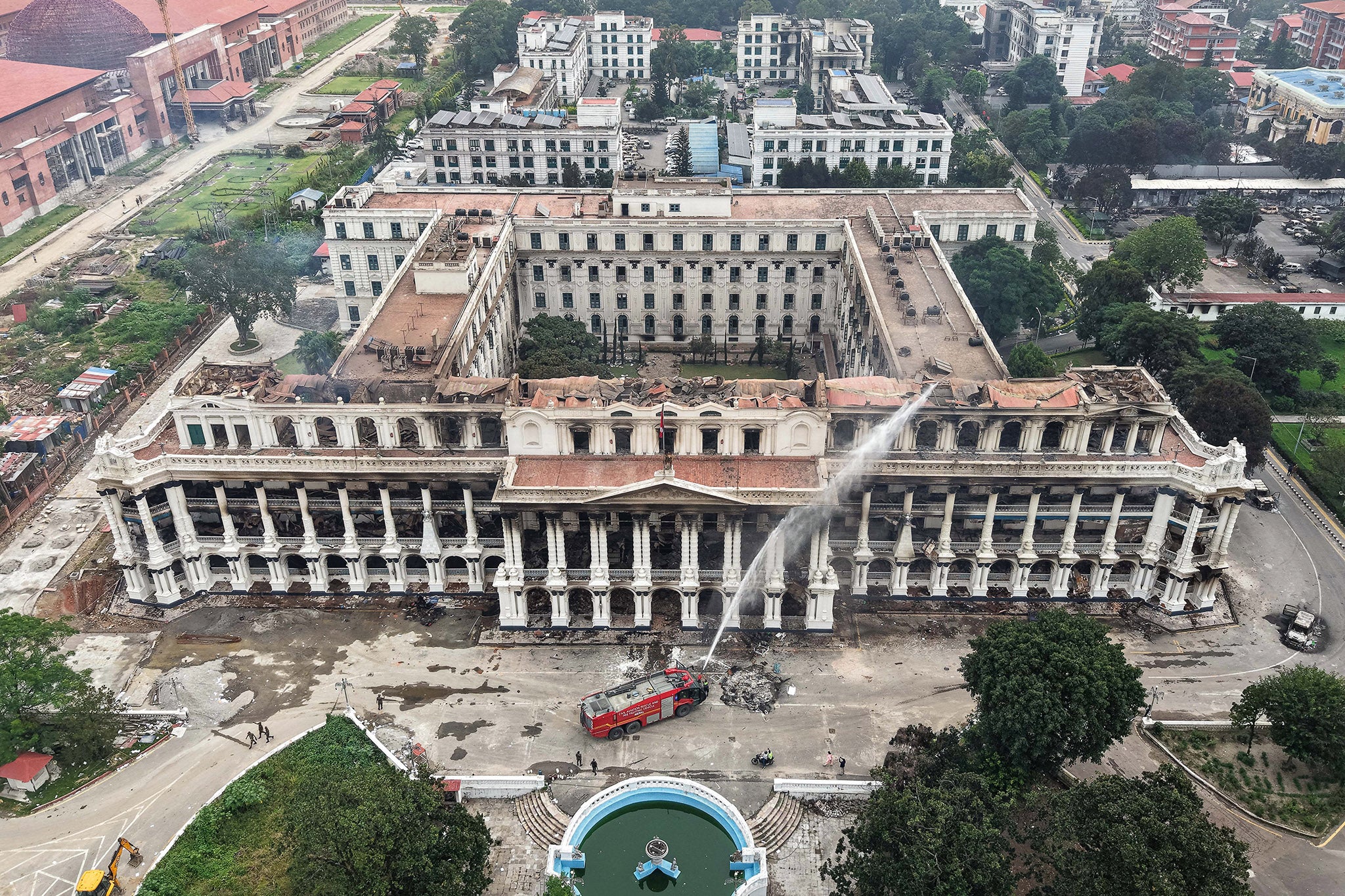
Mr Shah, meanwhile, voiced his “full support” for the movement, saying: “I want to understand their aspirations, objectives, and thinking.” His stance reflected the deep mistrust among young Nepalis towards institutions they see as corrupt and self-serving.
As things stand, there are no obvious candidates to step forward into leadership roles from the protest movement itself, however. Binod Dhungel, 53, a senior journalist based in the capital, told The Independent the situation was “complete chaos”.
Mr Dhungel says the political vacuum represents “a scenario I have never seen before in more than 40 years”.
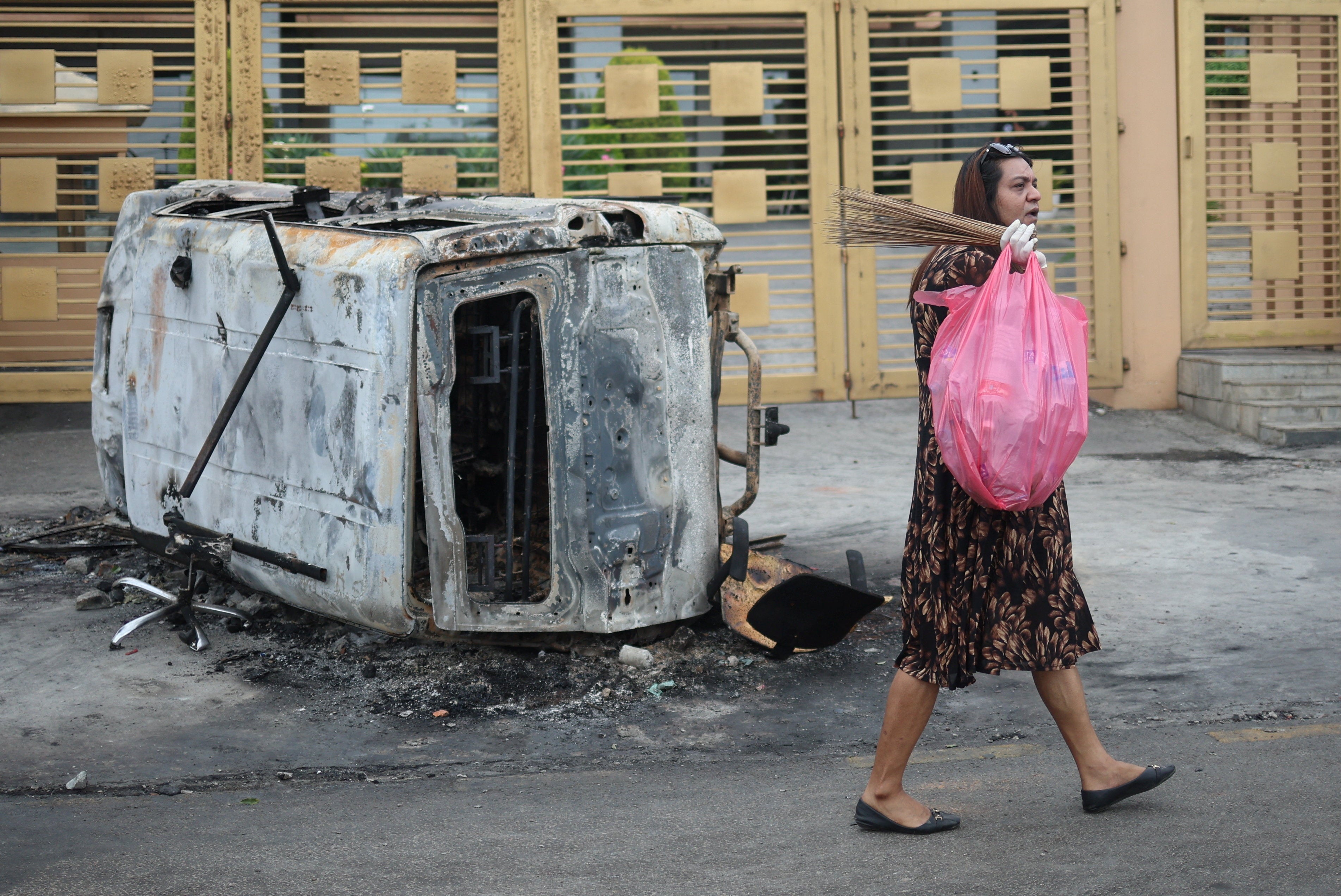
“All political leaders except those in power now say the next political force should be shared with Gen Z, that they must be decisive,” said Mr Dhungel. “But for the moment, the protesters remain an organised … but leaderless group.”
Minutes after Mr Oli’s resignation, Mr Shah – popularly known as Balen – appealed to demonstrators to exercise restraint. In a Facebook post, he acknowledged the protests were “entirely a Gen Z movement” but warned against further damage to public and private property.
“Dear Gen Z, your demand for the resignation of the government has been met. Now it is time to remain restrained. The loss of the country’s wealth is, in reality, a loss to our own property,” he wrote.
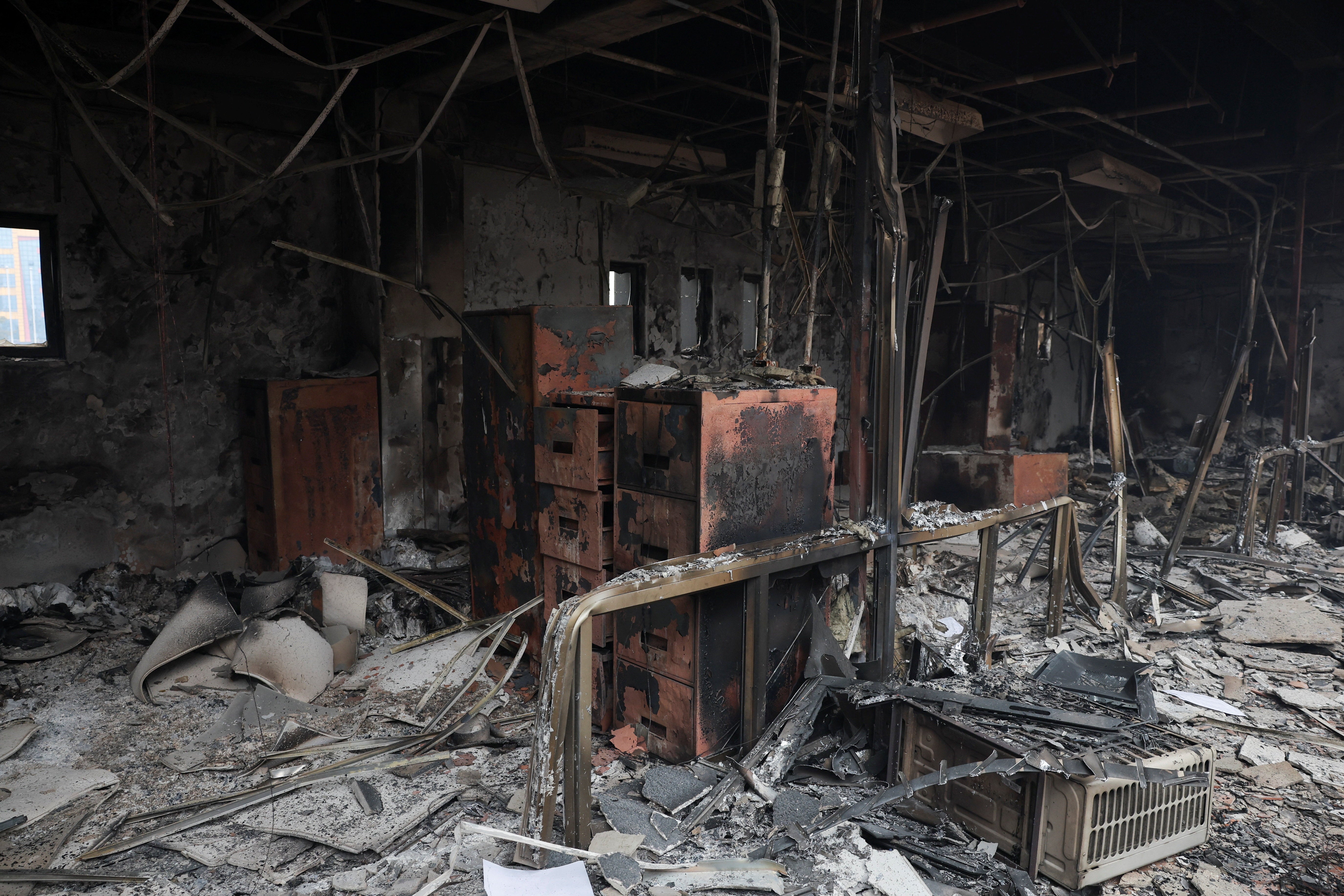
Nepal’s turmoil sits within a longer history of fragile democracy. The monarchy was abolished in 2008 after a mass uprising, following decades of turbulence that included a Maoist insurgency. Since then, not a single government has completed its full five-year term, fuelling instability and steadily eroding public trust.
Even before this week’s violence, younger Nepalis were rejecting traditional parties. In 2023, a Facebook campaign called “No, not again” urged voters to shun recycled politicians. When the Election Commission tried to ban the page, the Supreme Court intervened, upholding freedom of speech and dissent.
It was in this environment that Mr Lamichhane, a former television journalist, rose to prominence. Known for grilling corrupt officials live on air, he first gained attention in 2013 by hosting a Guinness World Record-breaking 62-hour talk show. In 2022, he founded the Rastriya Swatantra Party (RSP), which stunned the establishment by capturing 20 parliamentary seats, instantly becoming the fourth-largest bloc.
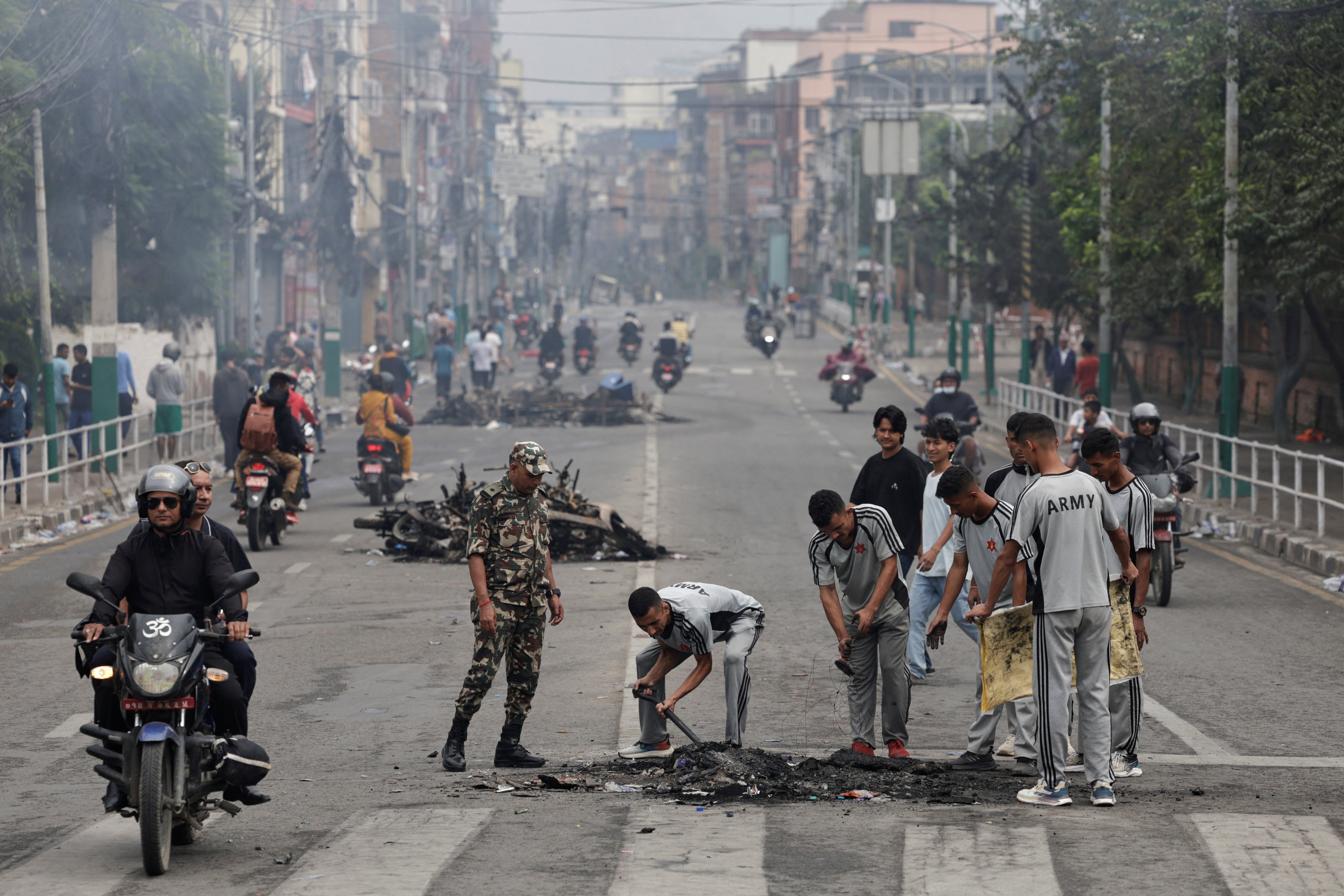
Appointed deputy prime minister and home minister, Mr Lamichhane positioned himself as the face of youth-led reform. But his rise was marred by controversy. The Supreme Court stripped him of office in 2023 over citizenship irregularities, though he quickly regained his seat in a by-election. Later, he was implicated in a cooperative fraud scandal and jailed in April this year pending trial. Despite this, his popularity endured – amplified by online communities that hailed him as a symbol of anti-corruption.
Under Nepal’s constitution, only a sitting MP can be appointed prime minister. But parliament’s credibility has collapsed, undermined further by mass resignations in the past 24 hours.
The names most often cited by demonstrators – Mr Shah and Mr Lamichhane – are not viable under current law. Other possibilities include Baburam Bhattarai, a former Maoist leader and ex-prime minister, though his past makes him divisive, says Mr Dhungel.
Mr Bhattarai’s house in Kathmandu was also torched by the protesters.
For ordinary Nepalis, the immediate concern is not political instability but survival. Kathmandu depends heavily on supplies from surrounding regions, but protests have paralysed traffic, raising fears of shortages and panic-induced looting.
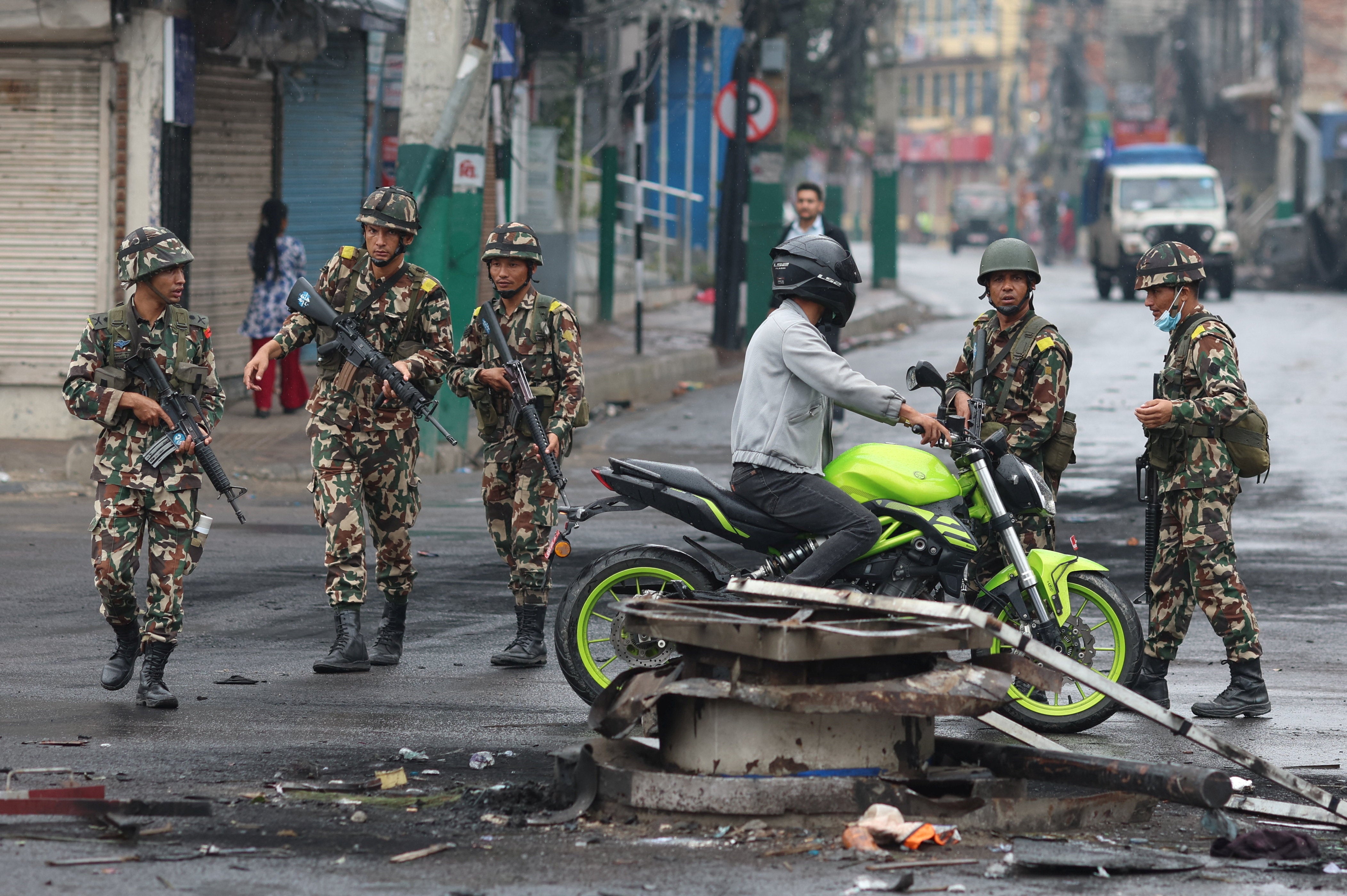
Shops and markets remained shut on Wednesday, while armoured vehicles patrolled empty streets. The main airport was closed for several hours, disrupting flights.
The turmoil has prompted alarm in India, which convened its security cabinet on Tuesday to discuss the crisis on its doorstep. “Nepal’s stability, peace, and prosperity are of utmost importance,” said prime minister Narendra Modi. “I humbly appeal to all my brothers and sisters in Nepal to maintain peace and order.”
China, a major investor in the country’s infrastructure, said on Wednesday that it hoped the Nepali people would come together to “properly handle” the crisis and restore national stability as soon as possible, while asking that Chinese citizens and institutions be safeguarded.
Despite the chaos, there are signs of dialogue being established.
Former Supreme Court Judge Balaram KC urged the protesters to set up a negotiation team, with the army helping to maintain law and order, and called for fresh elections.
“Parliament should be dissolved and fresh elections held,” the constitutional expert told Reuters. “They should discuss forming the next caretaker government.”
President Poudel also appealed for calm. “I urge all sides to remain calm, prevent further harm to the nation, and come to the table for talks,” he said. “In a democracy, the demands raised by citizens can be addressed through dialogue and negotiation.”
For now, Kathmandu remains under curfew. Soldiers – who until Wednesday stayed in their barracks and left police to attempt to control demonstrations – guard the charred parliament building, as residents wait anxiously to see whether their lives will return to normal or whether protests will erupt again.




